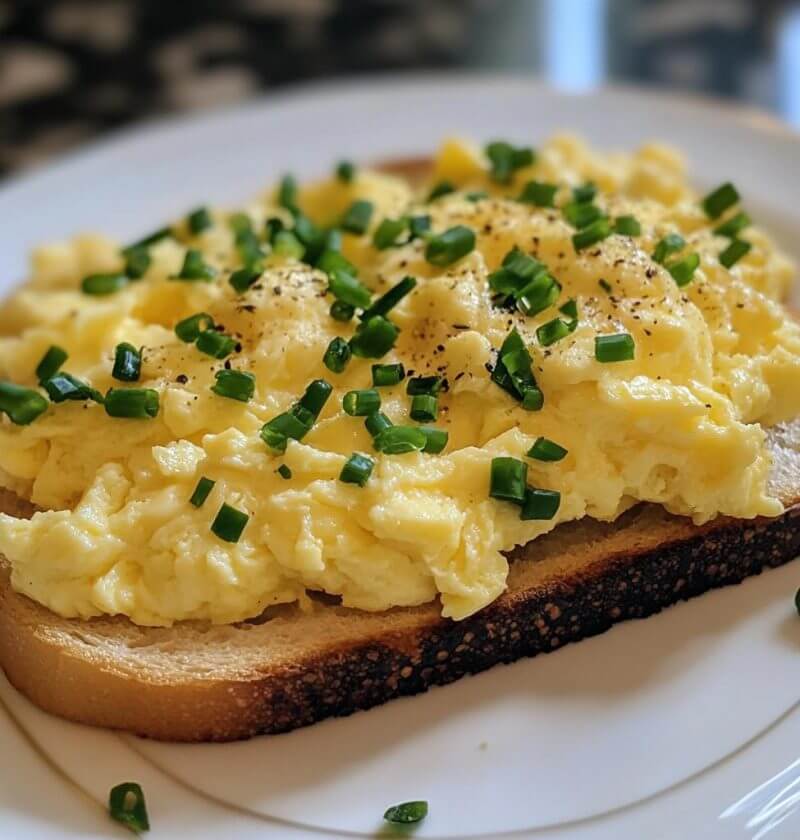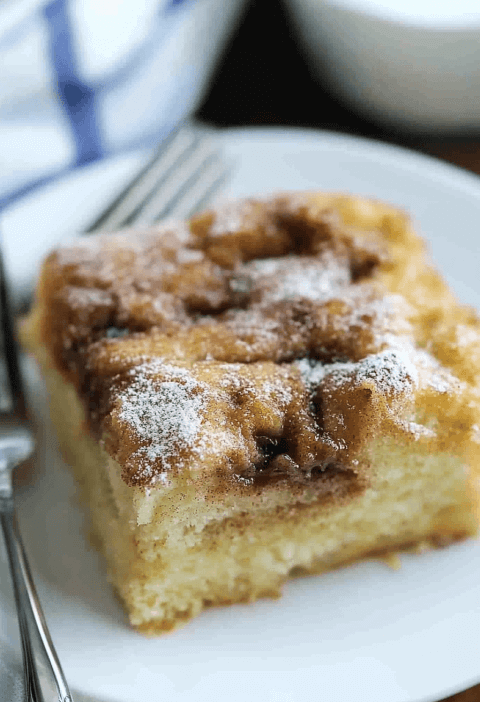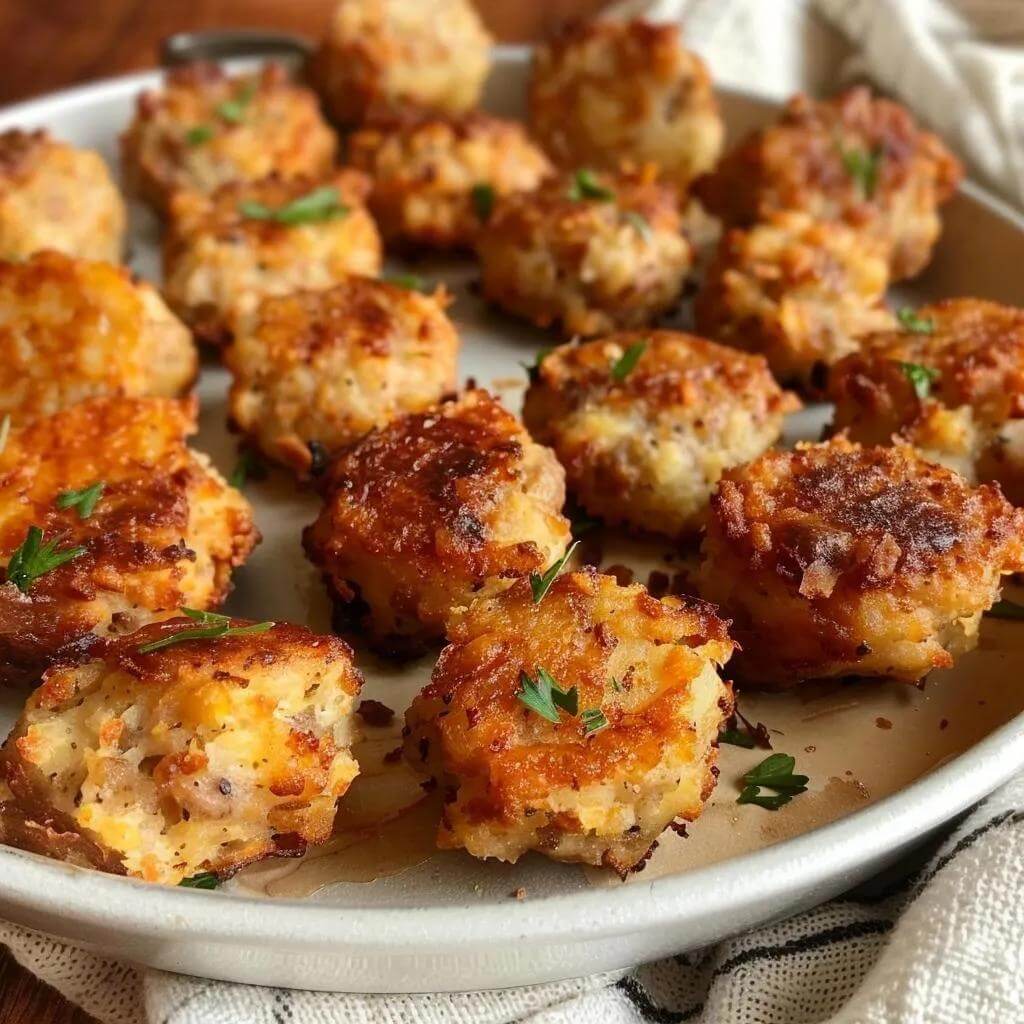Would you like to save this?
Scrambled eggs are one of the easiest dishes to make, which is why they’re often the go-to for beginner cooks. They’re quick, versatile, and perfect for busy mornings when you need a satisfying breakfast before rushing out the door. But making scrambled eggs isn’t just about cracking a few eggs into a pan and stirring. If you want light, fluffy, and tasty scrambled eggs every time, a few simple tricks can make all the difference. Ready to level up your egg game? Here are 7 tips that will have you cooking the perfect scrambled eggs.
1. Use a Non-Stick Pan
Why use a non-stick pan? If there’s one time when non-stick cookware is essential, it’s for scrambled eggs. Unlike stainless steel or cast-iron pans, non-stick ensures that your eggs won’t cling stubbornly to the sides. With stainless steel or cast iron, even if you use a low heat, the eggs tend to stick and burn, leaving you with a mess to scrape off. With a non-stick pan, you’ll have smoother cooking, and most importantly, more eggs left on your plate and less on the pan.
2. Crack the Eggs into a Bowl, Not Directly into the Pan
Sure, you might be tempted to crack the eggs directly into the pan to save time, but don’t skip this step. When you crack the eggs into a bowl first, it gives you the opportunity to whisk them properly, incorporating air into the mixture. This is key for fluffiness. Eggs whisked in a bowl will result in a light, airy texture rather than the dense, streaky clumps that come from eggs cracked straight into the pan. Use a fork or a whisk to blend until the yolks and whites are fully combined.
3. Add Water Instead of Milk or Cream
It’s a common mistake to add milk or cream to scrambled eggs, thinking it will make them richer. But guess what? Milk or cream actually makes the eggs heavier, which can detract from their fluffiness. Instead, add a splash of water when whisking your eggs. The water steams as the eggs cook, creating a light and airy texture. You can always add richness later with butter, but for now, let the water work its magic.
4. Cook on Low Heat for Better Texture
It can be tempting to crank up the heat to speed up the cooking process, but low and slow is the way to go when it comes to scrambled eggs. High heat can dry out the eggs, leaving them rubbery and overcooked. Start by preheating your pan on medium heat, then lower it to medium-low just before adding the eggs. This gentle heat allows the eggs to cook evenly and stay moist. It might take a minute or two longer, but trust me, it’s worth the wait for perfectly creamy scrambled eggs.
5. Master Your Scrambling Technique
Scrambled eggs can be as personal as how you take your coffee—some like them with big, fluffy curds, while others prefer smaller, finer pieces. The secret to getting the texture you love is all in how you move the eggs in the pan. For larger, soft curds, use a rubber spatula to make long, sweeping motions across the pan, covering as much surface as possible. If you prefer smaller, finer bits, make small circles with your spatula, breaking up the eggs as they cook. Either way, keep the spatula moving gently for a tender, silky result.
6. Add Butter for Richness
Skipping milk and cream doesn’t mean you have to sacrifice richness. Butter is your secret weapon for that creamy, decadent flavor. When the eggs are almost done but still slightly wet, add a small knob of butter to the pan. Let it melt, then gently fold it into the eggs. The butter adds a silky finish and an extra layer of richness without weighing down the eggs. You’ll notice the difference in flavor right away—creamy, dreamy scrambled eggs with every bite.
7. Season at the End for Best Results
Seasoning is crucial for tasty scrambled eggs, but timing is everything. If you add salt too early, it can draw moisture out of the eggs and make them dry and rubbery. For the best flavor and texture, wait until your eggs are almost fully cooked, then sprinkle with a pinch of salt. You can also add some freshly ground pepper, or take things up a notch with a sprinkle of chopped fresh herbs like chives or parsley. Feeling extra fancy? Mix in some shredded cheese for an indulgent, cheesy finish.
Bonus Tips for the Ultimate Scrambled Eggs Experience
- Use Fresh Eggs: Fresh eggs have a firmer white and a more vibrant yolk, making for better texture and flavor in your scrambled eggs.
- Don’t Overcook: Remember, scrambled eggs continue to cook slightly after being removed from the heat. Take them off the stove when they’re still a bit creamy for that perfect texture.
- Keep Stirring: Constant, gentle stirring ensures even cooking and prevents any part of the eggs from overcooking.
FAQs About Scrambled Eggs
1. Why do my scrambled eggs turn out rubbery?
Rubbery eggs are usually a result of cooking them over high heat or cooking them for too long. Stick to low heat and remove the eggs from the pan while they’re still a bit creamy to avoid this.
2. Can I use oil instead of butter?
Yes, you can use oil instead of butter, but you may miss out on some of the richness. A neutral oil like olive oil or avocado oil works well, but if you want that classic creamy flavor, butter is the way to go.
3. How do I know when the eggs are done?
Scrambled eggs are ready when they are mostly set but still a little bit shiny or glossy. They should look slightly undercooked when you remove them from the heat, as they’ll continue to firm up slightly on the plate.
4. What’s the best way to reheat scrambled eggs?
Reheating scrambled eggs can be tricky because they tend to dry out. The best way is to warm them gently in a non-stick pan over low heat, adding a small bit of butter or a few drops of water to keep them moist.
5. Can I make scrambled eggs without a whisk?
Yes! While a whisk is ideal for incorporating air, a fork works well too. Just make sure you mix the eggs thoroughly until the yolks and whites are completely blended.
Elevate Your Scrambled Eggs Every Time
Scrambled eggs don’t have to be bland or boring. With these tips, you’ll achieve the kind of fluffy, flavorful eggs that make breakfast worth waking up for. Whether you’re new to cooking or just looking to refine your technique, these strategies will help you create scrambled eggs that are soft, creamy, and full of flavor. So the next time you’re craving a quick and delicious breakfast, remember these tips and get ready to enjoy the best scrambled eggs of your life!







